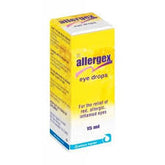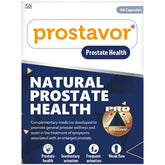Jaundice in newborns
Jaundice in newborns, also known as neonatal jaundice, is a common condition characterized by yellowing of the skin and sclerae (the whites of the eyes) due to elevated levels of bilirubin in the blood. While neonatal jaundice is often benign and resolves on its own, severe or prolonged jaundice may require medical evaluation and intervention. Understanding the causes, symptoms, diagnosis, and treatment options for jaundice in newborns is crucial for ensuring the health and well-being of newborn infants.
Causes
Neonatal jaundice occurs due to the accumulation of bilirubin in the baby's bloodstream. Bilirubin is a yellow pigment produced during the breakdown of red blood cells, and newborn infants have higher levels of bilirubin than adults due to factors such as:
-
Physiological Factors: In many newborns, jaundice is a normal physiological response to the breakdown of fetal red blood cells and the immature liver's limited capacity to process and excrete bilirubin.
-
Breastfeeding Jaundice: In some breastfed newborns, inadequate milk intake or ineffective breastfeeding may contribute to jaundice by causing dehydration or insufficient caloric intake, leading to increased bilirubin levels.
-
Breast Milk Jaundice: In rare cases, certain components in breast milk may interfere with bilirubin metabolism, leading to prolonged jaundice in breastfed infants.
-
Blood Group Incompatibility: Rh or ABO blood group incompatibility between the mother and baby can result in hemolytic disease of the newborn, causing excessive breakdown of red blood cells and elevated bilirubin levels.
-
Genetic Disorders: Inherited conditions such as glucose-6-phosphate dehydrogenase (G6PD) deficiency or hereditary spherocytosis may increase the risk of jaundice in newborns by predisposing them to hemolytic anemia.
Symptoms
The primary symptom of jaundice in newborns is yellowing of the skin and sclerae. Additional signs and symptoms may include:
- Yellowing of the palms and soles
- Poor feeding or decreased appetite
- Sleepiness or lethargy
- High-pitched crying or irritability
- Difficulty waking or staying awake for feedings
- Infrequent bowel movements or dark-colored urine
Diagnosis
Diagnosing jaundice in newborns typically involves visual assessment of skin color and measurement of serum bilirubin levels using a non-invasive device called a transcutaneous bilirubinometer or through a blood test. Additional diagnostic tests may be performed to identify underlying causes of jaundice, such as blood type and Coombs testing to assess for blood group incompatibility.
Treatment
Treatment for jaundice in newborns depends on the underlying cause and severity of jaundice and may include:
-
Phototherapy: Phototherapy involves exposing the baby's skin to special blue or white lights that help break down bilirubin into a form that can be excreted more easily by the body. Phototherapy may be administered in the hospital or at home using portable phototherapy devices.
-
Hydration and Feeding: Ensuring adequate hydration and nutrition is essential for managing jaundice, especially in breastfed infants. Encouraging frequent breastfeeding sessions and supplementing with expressed breast milk or formula as needed can help prevent dehydration and promote bilirubin excretion.
-
Exchange Transfusion: In severe cases of jaundice or hemolytic disease of the newborn, exchange transfusion may be necessary to rapidly lower bilirubin levels by replacing the baby's blood with compatible donor blood.
-
Monitoring and Follow-up: Close monitoring of bilirubin levels, feeding patterns, and overall health is essential for newborns with jaundice. Follow-up appointments with a healthcare provider may be scheduled to assess progress and adjust treatment as needed.
Conclusion
Jaundice in newborns is a common condition characterized by yellowing of the skin and sclerae due to elevated bilirubin levels. While neonatal jaundice is often benign and resolves on its own, severe or prolonged jaundice may require medical evaluation and intervention. By understanding the causes, symptoms, diagnosis, and treatment options for jaundice in newborns, parents and healthcare providers can ensure timely management and promote the health and well-being of newborn infants
- Complication of Jaundice in newborns
- Diagnosis of Jaundice in newborns
- How is Jaundice in newborns treated?
- Jaundice in newborns
- Jaundice in newborns myths
- Medicine for Jaundice in newborns
- Remedies for Jaundice in newborns
- Support for Jaundice in newborns
- Symptoms associated with Jaundice in newborns
- The best British Online Pharmacy
- Top 10 UK Pharmacies
- Treatment for Jaundice in newborns
- What causes Jaundice in newborns
- What is Jaundice in newborns
- Where can I buy medicine for Jaundice in newborns in the UK
- ZimSeller Pharmacy



















